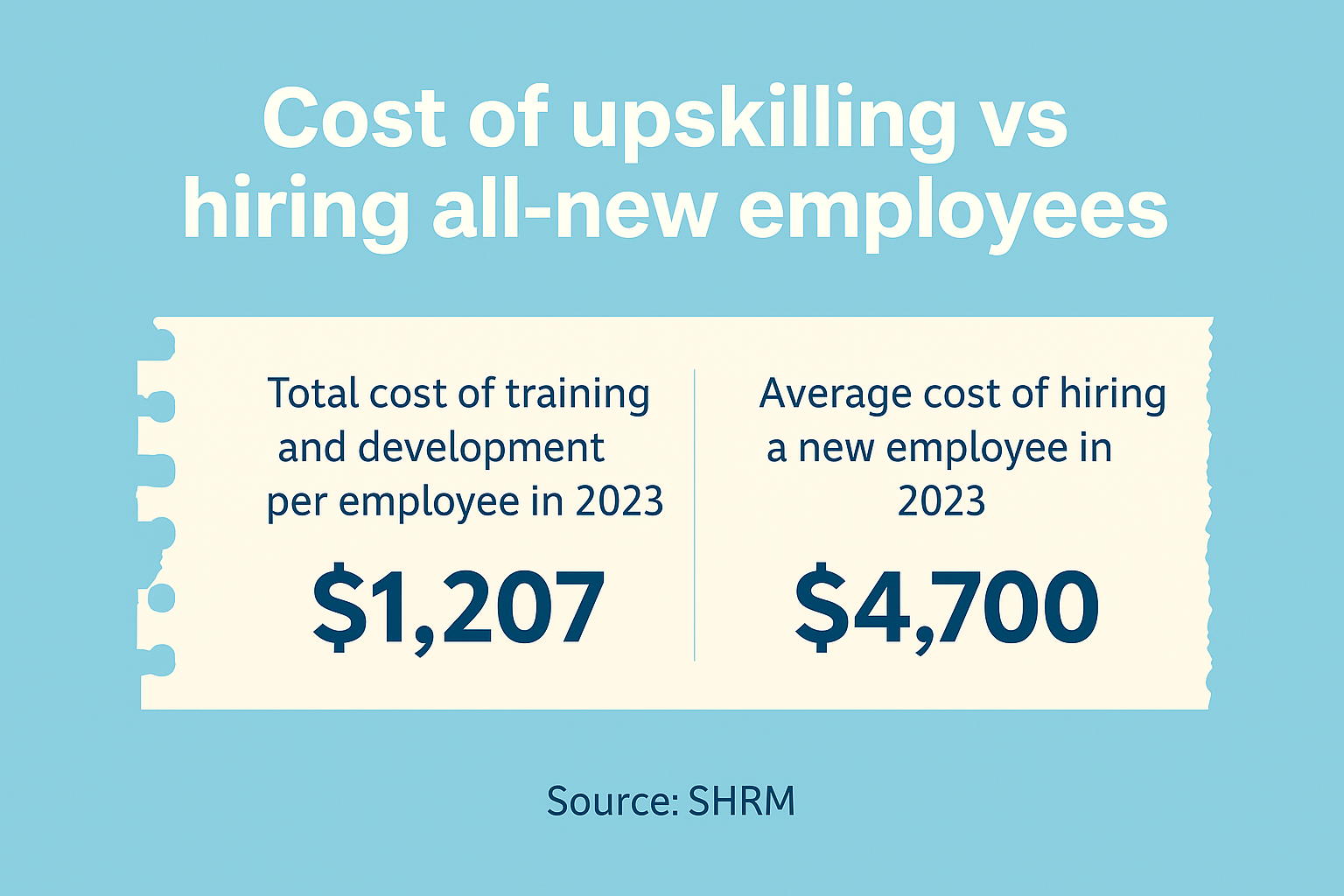Upskilling Employees in 2025: Why It Pays to Invest in Growth
Help Your People Grow, and Your Business Will Too. In 2025, upskilling employees isn’t just an HR trend — it’s a must-have strategy for companies that want to stay competitive, keep great talent, and grow from within.
Helping employees build new skills sends a powerful message: You matter here. We believe in your potential. And in today’s market, that message might be your most effective retention tool.
1. What Does Upskilling Employees Actually Mean?
Upskilling means helping employees build the capabilities they’ll need to succeed tomorrow — whether that’s using AI tools, managing data, or stepping into leadership roles.
It’s different from reskilling (which prepares someone for a new role entirely). But both serve a bigger goal: building a resilient, adaptable workforce that grows alongside your business.
According to the 2024 LinkedIn Workplace Learning Report, building skills is the top priority for L&D teams this year.
2. How to Spot the Skill Gaps Before They Slow You Down
You can’t upskill what you can’t see. Start by asking:
- What new skills are becoming essential in our field?
- Where are employees struggling to keep up?
- What hidden strengths are going untapped?
These answers might come from feedback, performance reviews, or skill assessments. Many HR platforms now offer tools to visualize gaps and track team readiness over time.
3. Designing Upskilling Programs That People Actually Want
Nobody wants more training for the sake of training. For upskilling employees to work, it has to feel relevant, flexible, and valuable.
The best programs are:
- Flexible: Bite-sized lessons, short videos, or team-based projects work better than long lectures.
- Personalized: Based on role, career goals, and learning styles.
- Recognized: When growth is celebrated, more people participate.
You don’t have to build it all internally. Many teams combine in-house learning with tools like Coursera, LinkedIn Learning, or mentorship programs.
4. How HR Tech Supports Upskilling Employees
Technology plays a big role in delivering and measuring learning impact. Look for platforms that offer:
- Skill gap analysis and employee assessments
- Learning management systems (LMS) that integrate with your HRIS
- Career pathing tools to support internal mobility
- Dashboards to track progress and ROI
Upskilling employees isn’t just good for morale — it’s good data. HR tech helps you prove it.
5. Why Upskilling Employees Pays Off in 2025
When you give employees the tools to grow, here’s what you get back:
- Retention — People stay where they feel supported and seen.
- Agility — Upskilled teams adjust quickly to new demands.
- Performance — Skills drive confidence, and confidence drives results.
Still wondering if it’s worth the investment? In 2023, U.S. organizations spent an average of $1,207 per employee on training, according to Training Magazine. Hiring someone new cost around $4,700, per SHRM. Growth from within isn’t just meaningful — it’s cost-effective.
6. Skills-Based Hiring: Another Reason to Upskill Employees
In 2024, skills-based hiring went mainstream. Companies like IBM, Google, and Walmart are dropping degree requirements and focusing on capabilities over credentials.
LinkedIn reports that 45% of hirers now use skills data to fill roles — a major shift in how companies view talent.
Research from Harvard Business School and Accenture confirms that organizations tapping into skills-first hiring unlock larger, more diverse talent pools.
If your company is rethinking how it hires, don’t forget to rethink how it grows. Upskilling employees is what makes skills-first strategies possible.
Invest in Growth That Lasts
Upskilling employees isn’t just a response to change — it’s a way to lead through it. The companies that will thrive in 2025 are already investing in learning, listening, and helping people level up.
So start small. Make learning visible. Celebrate it often. Because when your people grow, so does your business.
Key Takeaways
- Upskilling employees builds trust, capability, and loyalty.
- Start with clear goals and listen for real gaps.
- Support learning with the right tools and feedback.
- Hiring is getting smarter — make sure your team is ready.



1 thought on “How to Upskill Your Workforce in 2025”
Comments are closed.